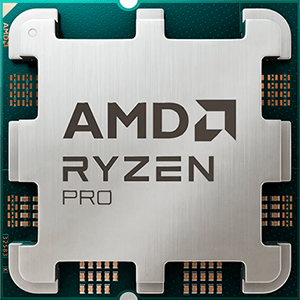Intel Core i7 1060G7 vs AMD Ryzen 9 8940HX
We compared two laptop CPUs: Intel Core i7 1060G7 with 4 cores 1.0GHz and AMD Ryzen 9 8940HX with 16 cores 2.4GHz . You will find out which processor performs better in benchmark tests, key specifications, power consumption and more.
Main Differences
Intel Core i7 1060G7 's Advantages
Lower TDP (9W vs 55W)
AMD Ryzen 9 8940HX 's Advantages
Released 5 years and 8 months late
Higher specification of memory (5200 vs 3733)
Newer PCIe version (5.0 vs 3.0)
Higher base frequency (2.4GHz vs 1.0GHz)
Larger L3 cache size (64MB vs 8MB)
More modern manufacturing process (5nm vs 10nm)
Score
Benchmark
Cinebench R23 Single Core
Intel Core i7 1060G7
1116
AMD Ryzen 9 8940HX
+62%
1809
Cinebench R23 Multi Core
Intel Core i7 1060G7
4238
AMD Ryzen 9 8940HX
+598%
29610
General Parameters
Aug 2019
Release Date
Apr 2025
Intel
Manufacturer
Amd
Laptop
Type
Laptop
x86-64
Instruction Set
x86-64
Ice Lake
Core Architecture
Zen 4 (Dragon Range)
i7-1060G7
Processor Number
-
BGA-1440
Socket
FL1
Iris Plus Graphics G7
Integrated Graphics
Radeon 610M
-
Generation
Ryzen 9 (Zen 4 (Dragon Range))
Package
-
Transistor Count
13.14 billions
10 nm
Manufacturing Process
5 nm
9 W
Power Consumption
55 W
-
Max Turbo Power Consumption
75 W
100 °C
Peak Operating Temperature
100 °C
-
Foundry
TSMC
-
Die Size
2x71 mm²
-
I/O Process Size
6 nm
-
I/O Die Size
122 mm²
CPU Performance
4
Performance Cores
16
8
Performance Core Threads
32
1.0 GHz
Performance Core Base Frequency
2.4 GHz
3.8 GHz
Performance Core Turbo Frequency
5.3 GHz
4
Total Core Count
16
8
Total Thread Count
32
-
Bus Frequency
100 MHz
10x
Multiplier
24
64 K per core
L1 Cache
64 K per core
256 K per core
L2 Cache
1 MB per core
8 MB shared
L3 Cache
64 MB shared
No
Unlocked Multiplier
Yes
-
SMP
1
Memory Parameters
LPDDR4-3733
Memory Types
DDR5-5200
32 GB
Max Memory Size
-
2
Max Memory Channels
2
58.3 GB/s
Max Memory Bandwidth
-
No
ECC Memory Support
No
Graphics Card Parameters
true
Integrated Graphics
true
300 MHz
GPU Base Frequency
400 MHz
1100 MHz
GPU Max Dynamic Frequency
2200 MHz
512
Shader Units
128
64
Texture Units
8
8
Raster Operation Units
4
-
Execution Units
2
15 W
Power Consumption
15
5120x3200 - 60 Hz
Max Resolution
-
-
Graphics Performance
0.6 TFLOPS
Miscellaneous
3.0
PCIe Version
5.0
-
PCIe Lanes
28
SSE4.1, SSE4.2, AVX-2, AVX-512
Extended Instruction Set
-






